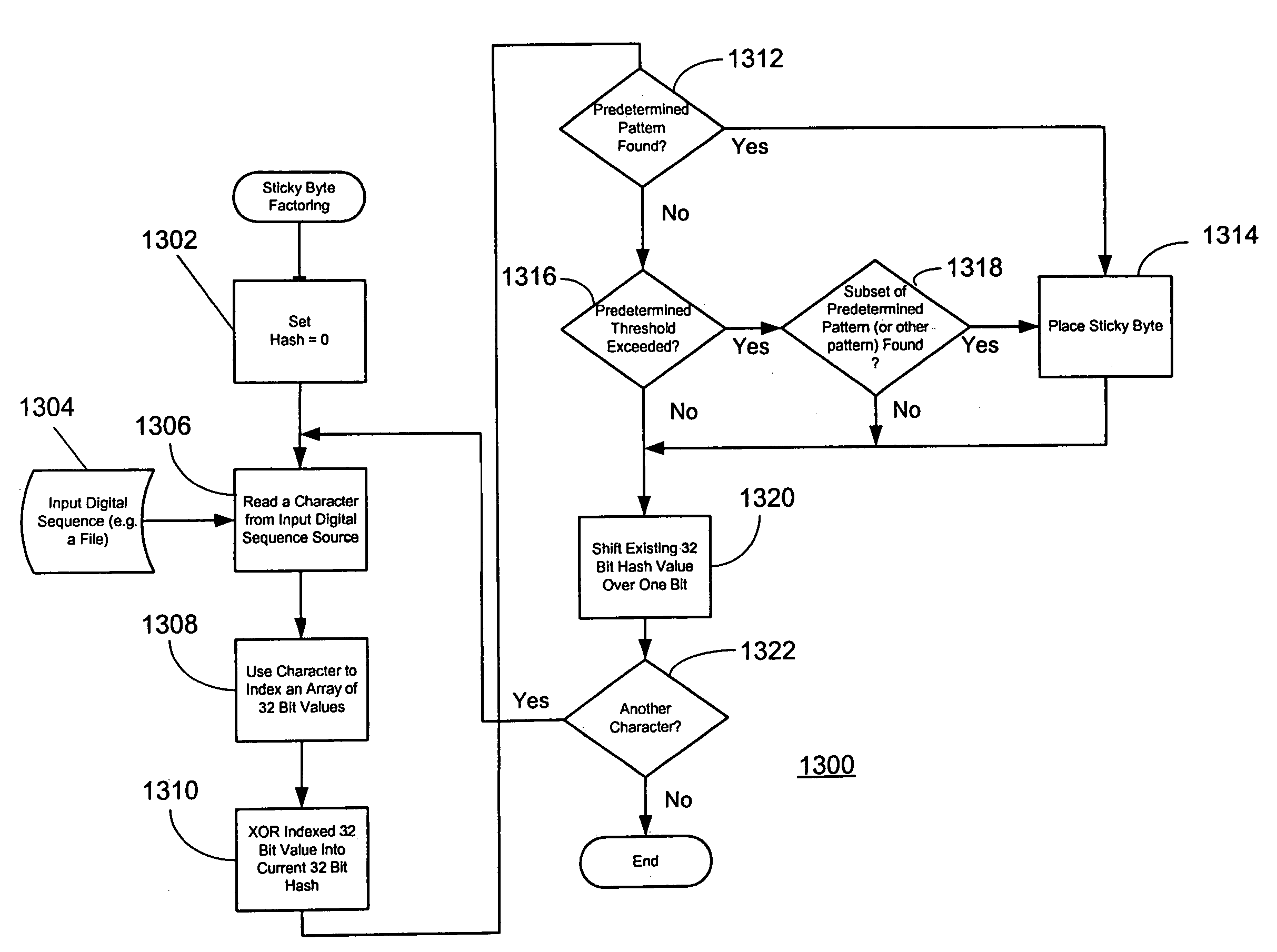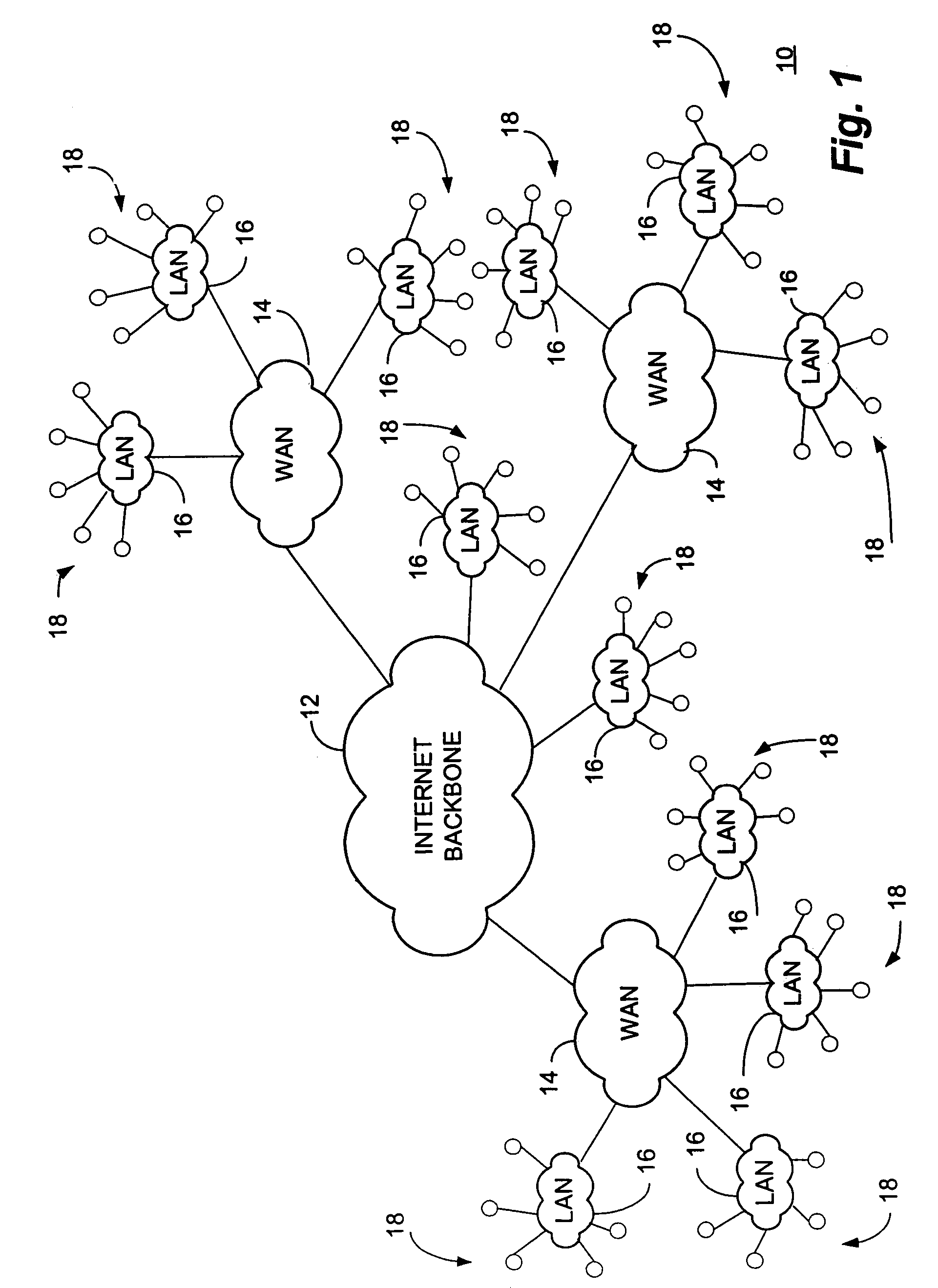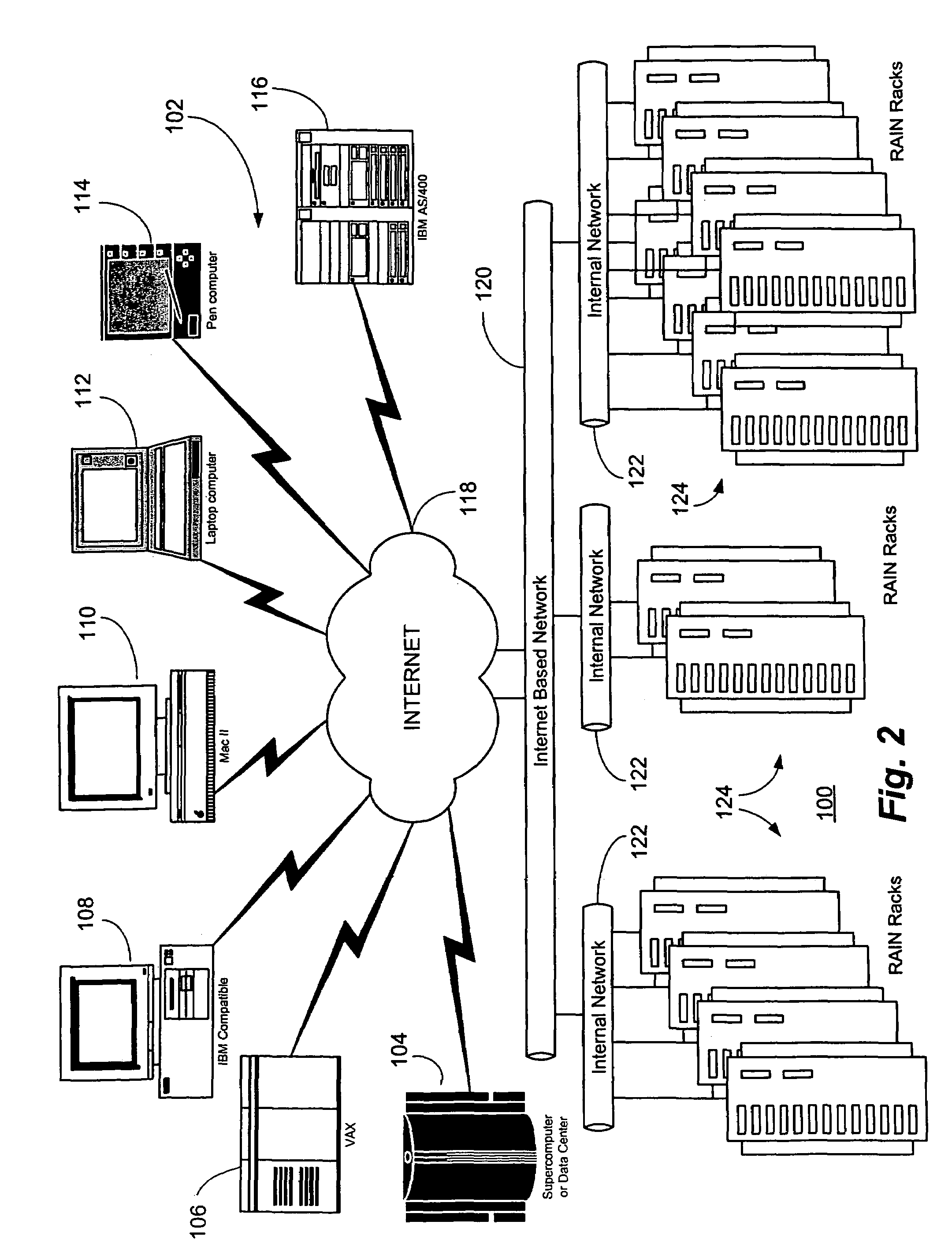System and method for unorchestrated determination of data sequences using sticky byte factoring to determine breakpoints in digital sequences
a technology of data sequences and factoring, applied in the field of system and method for the unorchestrated determination of data sequences using “ sticky byte ” factoring to determine breakpoints in digital sequences, can solve the problems of methods factoring poorly, the most impressive advances in computer mass storage architectures cannot keep pace, and the volume tends to quadruple each, so as to achieve low overhead, reduce the effect of complexity and low cos
- Summary
- Abstract
- Description
- Claims
- Application Information
AI Technical Summary
Benefits of technology
Problems solved by technology
Method used
Image
Examples
example 1
[0080]
int hash = 0; / / initial value of hashsum is zero.int sticky_bits = 0;int last_sticky_point = 0;for( int i=O; i { / / For each byte in the sequence of “f”, “hash” / / represents the rolling hash of the file.hash = (hash >> 1) | scramble [f[i]]; / / sticky_bits is a non-uniform value with the / / characteristic that larger values are produced less / / frequently.sticky_bits = (hash − 1) {circumflex over ( )} hash; / / This calculation determines whether the current byte / / should be considered the end of the partition.if( sticky_bits > threshold ){output_sticky_point ( i ); / / “last_sticky_point” remembers the index of the / / previous partition for (optional) use in determining / / the existing partition's length as a factor in the / / threshold calculation.last_sticky_point = i;}}
[0081]The system and method of the present invention steps sequentially through a sequence of values and calculates a rolling hashsum value. That hashsum value at index “i” is dependent only on the bytes at indexes i-31 through i. ...
example 2
[0085]
int hash = 0; / / initial value of hashsum is zero.int sticky_bits = 0;int last_sticky_point = 0;for( int i=O; i { / / For each byte in the sequence of “f”, “hash” / / represents the rolling hash of the file.hash = (hash >> 1) | scramble [f[i]]; / / sticky_bits is a non-uniform value with the / / characteristic that larger values are produced less / / frequently.sticky_bits = (hash − 1) {circumflex over ( )} hash; / / This calculation determines whether the current byte / / should be considered the end of the partition.if( sticky_bits +sticky_weighting* (i-last_sticky_point) > threshold ){output_sticky_point( i ); / / “last-sticky-point” remembers the index of the / / previous partition for optional use in determining / / the existing partition's length as a factor in the / / threshold calculation.last_sticky_point = i;}}
[0086]In this particular embodiment of the system and method of the present invention, an adjustment has been made to produce more consistent partition sizes. This is effectuated by essentially...
PUM
 Login to View More
Login to View More Abstract
Description
Claims
Application Information
 Login to View More
Login to View More - R&D
- Intellectual Property
- Life Sciences
- Materials
- Tech Scout
- Unparalleled Data Quality
- Higher Quality Content
- 60% Fewer Hallucinations
Browse by: Latest US Patents, China's latest patents, Technical Efficacy Thesaurus, Application Domain, Technology Topic, Popular Technical Reports.
© 2025 PatSnap. All rights reserved.Legal|Privacy policy|Modern Slavery Act Transparency Statement|Sitemap|About US| Contact US: help@patsnap.com



